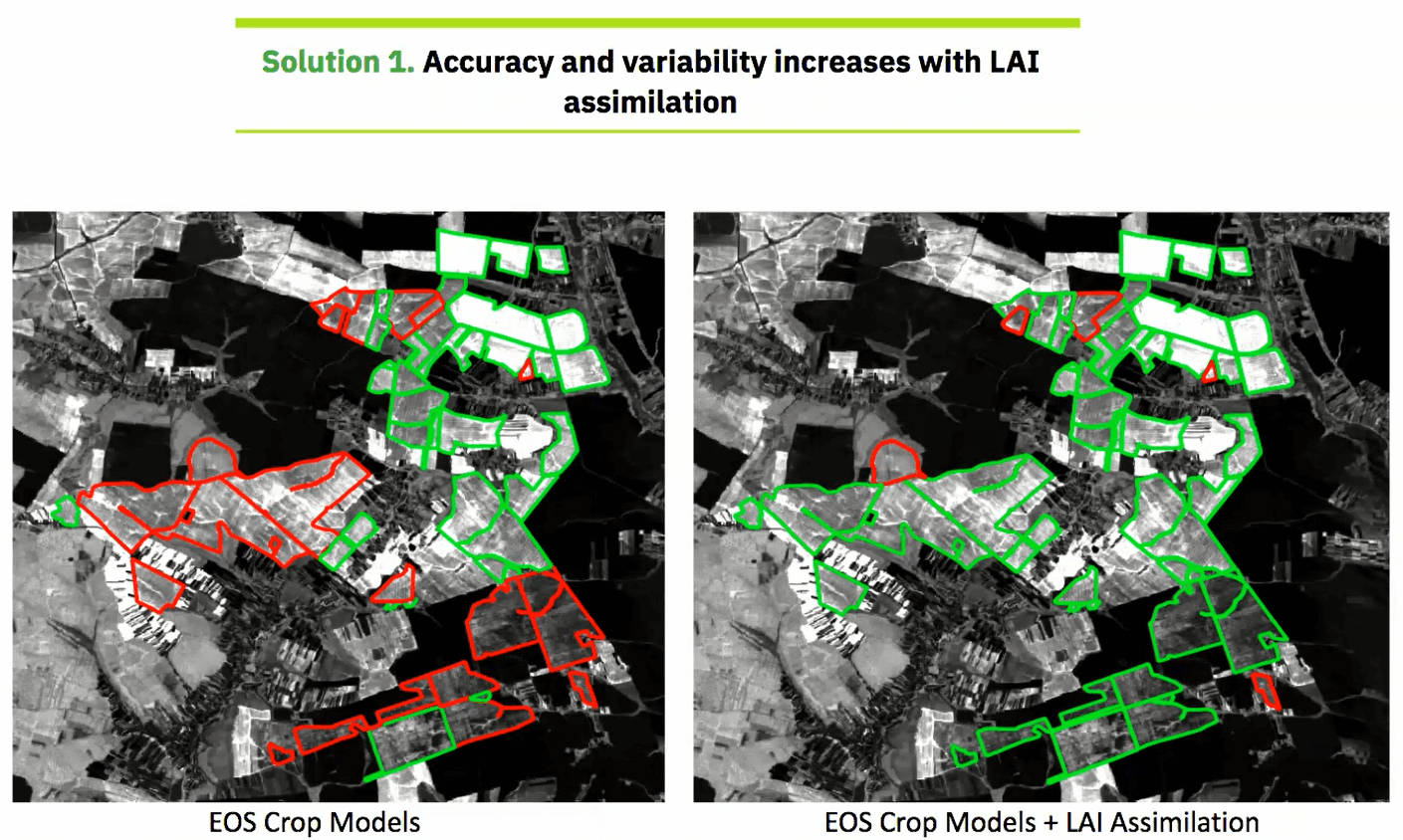EOS Data Analytics is developing crop simulation technologies to be used at the field level for farmers
By Ryan Ridley
Farms.com
The goal of yield forecasting is to make reasonable management and financial decisions and to minimize risks.
Attendees of the 2020 Farms.com Precision Agriculture Conference & Ag Technology Showcase tuned in to Lina Yarysh’s presentation on ‘Yield Forecasting as a Key to Sustainable Use of Fertilizers’.
Yarysh is a Satellite Solution Consultant for Agriculture and Forestry at EOS Data Analytics, an automated cloud-based geographic information system (GIS) analysis service.
“Companies nowadays have been working on putting yield prediction into action, in a practical way,” says Yarysh.
Yield prediction can answer the following questions for growers and seed producers:
- What crops are more efficient to produce considering climate shift? Especially applicable for multi-year crops.
- What is the reasonable amount of fertilizers to use to gain the highest productivity?
- How to predict the performances of new hybrids in various environments to breed for better varieties?
“Currently, we are trying to apply crop simulation technologies for building various scenarios to make it possible for farmers to use this technology at the field level,” she explains.
EOS Data Analytics (EOS) can easily forecast yield in a province or region with over 80 percent accuracy, the more difficult challenge is meeting that same accuracy at the farm and field level.
The accuracy of forecasting is lower at the field level due to lack of historical data and low spatial variability of weather data.
Another major goal for the company is to provide fertilizer recommendations for 2021, reaching the highest possible yield using yield modeling. While creating field forecasts for Canada, the team discovered that some fields include lakes and woodlots, which created a challenge for EOS.
“It’s not very easy to understand the vegetation of crops from space when you have a lot of other objects there in the field,” adds Yarysh.
So, how is EOS tackling these challenges?
Using the EOS Crop Engine, which includes analysis of soil type, weather and crop phenology, the company can predict yield scenarios by adding satellite data at every stage of crop development. This allows EOS to narrow down the possible crop scenarios to the one that is most likely.
To get a better idea of the different vegetation on a specific field, EOS divides the fields into several productivity zones, allowing the company to capture all the vegetation in a field rather than the average.
By understanding the heterogeneity of vegetation in a field, EOS can include it into the modelling to increase yield forecast accuracy.
The company found that accuracy and variability increased with LAI assimilation.
“We include the values for the different zones in the field into prediction models,” says Yarysh. “This allowed us to improve the accuracy to 80 percent or more for the fields that were showing worse results without LAI assimilation.”

Image: Green > 80% accuracy, Red < 80% accuracy
When putting this modeling to the test in Canada, EOS found that “the accuracy of the forecast increases with the addition of official statistics of the actual yield. This will increase yield accuracy for the following years.”
Using land cover classification and crop edge detection technology, the company can differentiate the lakes and trees within a field. The technology detects the edges of a field so that LAI assimilation is not spoiled and so that the correct values can be added to the modeling.
“These steps for correct and accurate yield prediction is key to providing the correct recommendations for fertilizer use,” explains Yarysh.
EOS then modelled the influence of fertilizers on yield performance, finding that non-fertilized crops plateau around day 110.
This type of simulation is beneficial for seed companies as they get the results and apply them right away, they no longer must wait for several seasons of testing to fully understand how hybrids will perform.
“Modeling can save money for testing – you can build different scenarios and varieties,” adds Yarysh.
Yarysh then discusses N, P, K graphs, showing yield growth based on adding these fertilizers at various rates.
This allows users to run modeling in the middle of the season and predict the optimal amounts of fertilizer considering crop consuming capacity.
EOS is a big supporter of virtual farms, believing that all farmers should have a virtual farm where they can build various scenarios.
“[Virtual farms] are like pilots that use simulations to decrease possible risks in the future. EOS believes in virtual farms and simulation scenarios for better decision making out-of-box,” says Yarysh.
Photo: eos.com/industries/agriculture